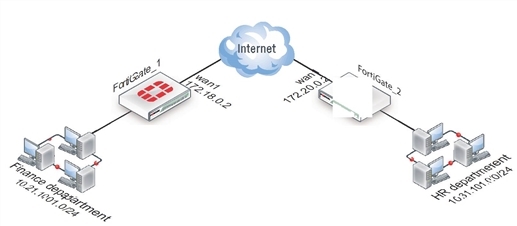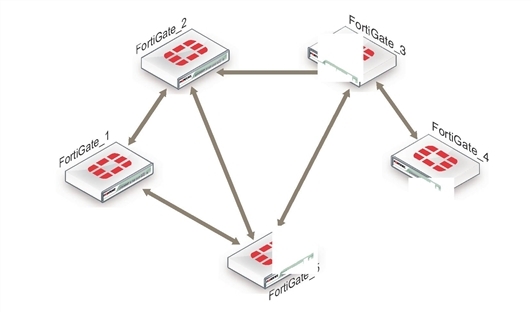Configuration overview
In a gateway-to-gateway configuration, two FortiGate units create a VPN tunnel between two separate private networks. All traffic between the two networks is encrypted and protected by FortiGate security policies.
Example gateway-to-gateway configuration

In some cases, computers on the private network behind one VPN peer may (by co-incidence) have IP addresses that are already used by computers on the network behind the other VPN peer. In this type of situation (ambiguous routing), conflicts may occur in one or both of the FortiGate routing tables and traffic destined for the remote network through the tunnel may not be sent. To resolve issues related to ambiguous routing, see Configuration overview.
In other cases, computers on the private network behind one VPN peer may obtain IP addresses from a local DHCP server. However, unless the local and remote networks use different private network address spaces, unintended ambiguous routing and/or IP-address overlap issues may arise. For a discussion of the related issues, see FortiGate dialup-client configurations .
You can set up a fully meshed or partially meshed configuration (see below).
Fully meshed configuration

In a fully meshed network, all VPN peers are connected to each other, with one hop between peers. This topology is the most fault-tolerant: if one peer goes down, the rest of the network is not affected. This topology is difficult to scale because it requires connections between all peers. In addition, unnecessary communication can occur between peers. Best practices dictates a hub-and-spoke configuration instead (see Hub-and-spoke configurations).
Partially meshed configuration

A partially meshed network is similar to a fully meshed network, but instead of having tunnels between all peers, tunnels are only configured between peers that communicate with each other regularly.

